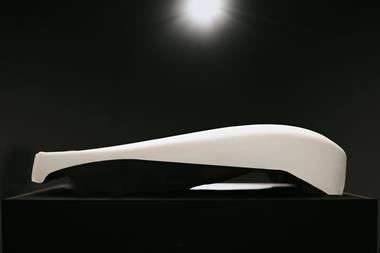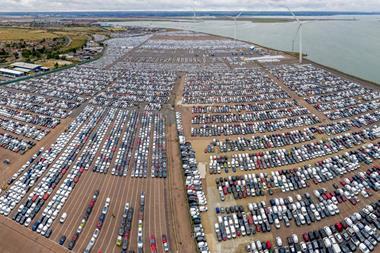Vehicles in transport will always face a small but significant chance of damage that can have a large impact on costs, whether related to weather or vehicle handling issues, rust from rail transport or vandalism.
While the LSPs pay for handling-related damage, it is the carmakers who pay the ultimate costs in the supply chain, particularly in flow stop, vehicle accumulation, and various costs of cleaning, repairs and inspection–not to mention the harm to customer satisfaction that results from longer delivery times. In effect, these become costs that are absorbed ‘silently’ throughout the supply chain, whether in insurance premiums, lower rates or brand depreciation.
There are several ways to reduce these damages and hence costs, including enhanced training for vehicle handlers and better analysis of damages to determine their root causes. Another way is with the use of transport protection.
While there are many different kinds of protection products for cars, the most popular at the moment is probably the use of adhesive films. These are cheap, straightforward, and come in foil that can be easily adapted for any use on the bodywork of the car.
On the contrary, such films have limits: they offer only light protection (just 60 micron thick) and have strict temperature limits for application; the film is also not breathable and could cause damage upon application or removal. Some OEMs even use robots to put these adhesives on.
An improved version of partial protection is a film with perimetric adhesive. This type of adhesive is made from nonwoven material coated with a waterproof and breathable +12 UV block film, the thickness of which is about 1 mm. The double-sided adhesive, specific for paint, is located just on the perimeter of the protection. This adhesive can be designed for any part of the bodywork but is used most commonly for roof and bonnet protection. The cost is still quite cheap and it has a short application time.
The downsides are that these adhesives offer a limited covered area (protecting 10-15% of possible damage areas). Another reason many carmakers don’t use them is that such adhesives tend to hide dents, which can cause problems in the inspection and claims process. The most advanced partial protections are those that use mechanical fixes, basically by means of hooks or Velcro strips and window adhesive application.
These protections have the same dimensions and UV block film as the perimetric adhesive, but are specifically designed for each part of the car. The bonnet is usually applied with no adhesive at all, but works like a cap and is fixed internally with Velcro strips and buttonholes. It takes just 10” to be fixed so it can be done during assembly. The roof and boot protections use windscreen adhesive (which is very strong), side welded adhesive (just above the door line), and rear boot mechanical fixing (or window adhesive). There is no risk of the detachment, none or very few adhesives in contact with the paint, and they are very costeffective with respect to their performance.
The ultimate protection for car transport is the full body cover. This product is basically a bespoke cover that, by means of transparent windows, open wheel arches and door zips, allows the operator to drive the car even when protected.
Again made from non-woven material, 1mm thick with waterproof and UV protection, the full body cover protects 100% of the car’s painted surface and has no adhesive contact with the bodywork of the car.
It reduces the cost of repairs up to 85%, eliminates the need for washing during the transport, and it protects the assemblyquality paintwork. There is also no detachment risk, and its use may be particularly effective for difficult route shipments.
While you can always choose to clean your car and repair damages, these options suggest that there are simple, affordable products that allow carmakers to spend the same money to increase the quality of the overall process.
Alessandro Bolleri, sales manager Covercar 2T




















